Gasoline Retailer Case Study: AM/FM Radio Adds Incremental Reach To TV And Boosts ROI and Sales Effect
A gasoline retailer wanted to assess the sales impact of adding AM/FM radio to their television media plan.
Westwood One commissioned Nielsen to conduct a sales lift and ROI study of the entire AM/FM radio and television campaign, not just the ads that ran on Westwood One. To measure campaign sales effect, Nielsen matched the Portable People Meter panelists with credit and debit card spending data from Nielsen Buyer Insights. Purchases from consumers exposed to the AM/FM radio campaign were compared to purchases of those not exposed. This approach allows Nielsen to isolate the impact AM/FM radio has on sales lift.
To measure AM/FM radio’s incremental reach, Nielsen utilized the Portable People Meter panel to analyze the exposed audiences of the AM/FM radio and television campaign.
Here are the key findings:
Most AM/FM radio reach generated was incremental to television. AM/FM radio enhanced the gasoline retailer’s TV campaign with a +61% reach lift. Two-thirds of AM/FM radio’s total campaign reach was not exposed on TV.
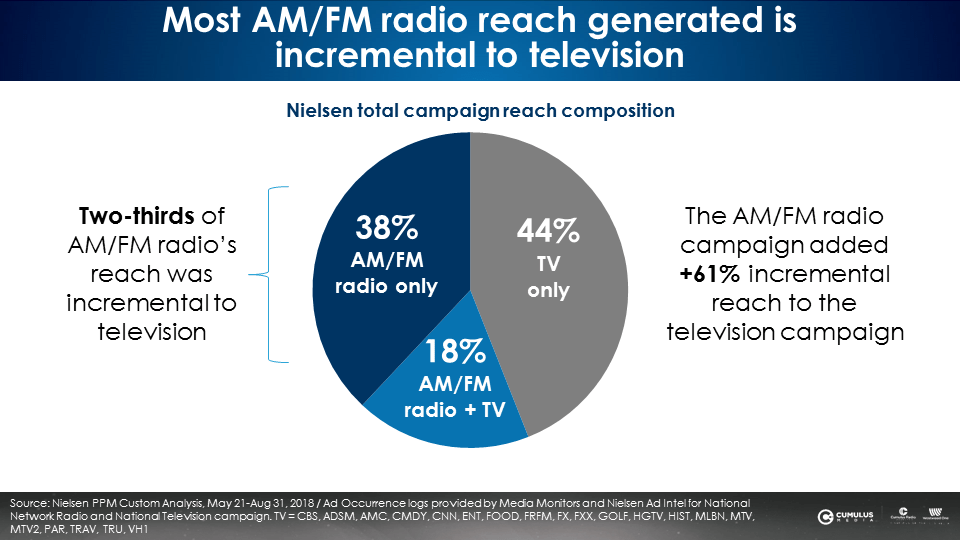
AM/FM radio’s incremental reach growth was especially powerful among younger demos. Among Millennials 18-34, AM/FM radio added +82% incremental reach to the TV campaign. Incremental reach was also significant among persons 25-54 (+74%). Among persons 35-64, there was +63% incremental reach and among persons 55+, +44%.
The younger the consumer, the greater the unique audience AM/FM radio generates that is not reached on television.
Ad-supported television audiences are rapidly aging. According to a UBS analysis of Nielsen data, in 2012, 36% of television viewing came from persons 55+. Today, the 55+ demographic now represents more than half of all TV viewing (52%).
Linear TV viewing among 18-49 has plunged, causing the age profile of TV campaigns to skew dramatically older. Adding AM/FM radio to the media plan significantly boosts 18-49 incremental reach.
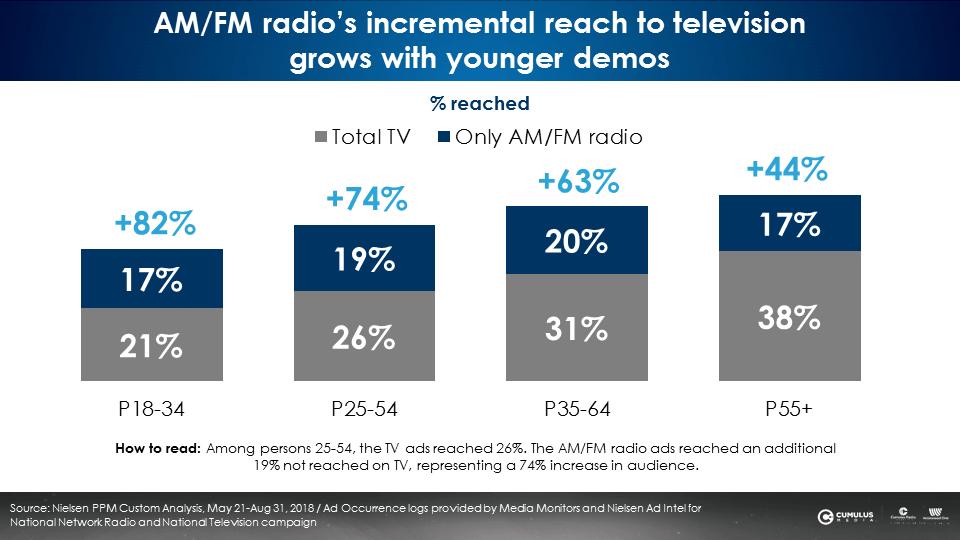
AM/FM radio is 27% more efficient than TV. At 40% of the budget, AM/FM radio’s reach of 40.7 million people was nearly the same as television (44.7 million). AM/FM radio was 27% more efficient than TV in cost per thousand net reach: $3.93 for AM/FM radio versus $5.36 for television. With AM/FM radio, the gasoline retailer generated more mileage out of their media spend.
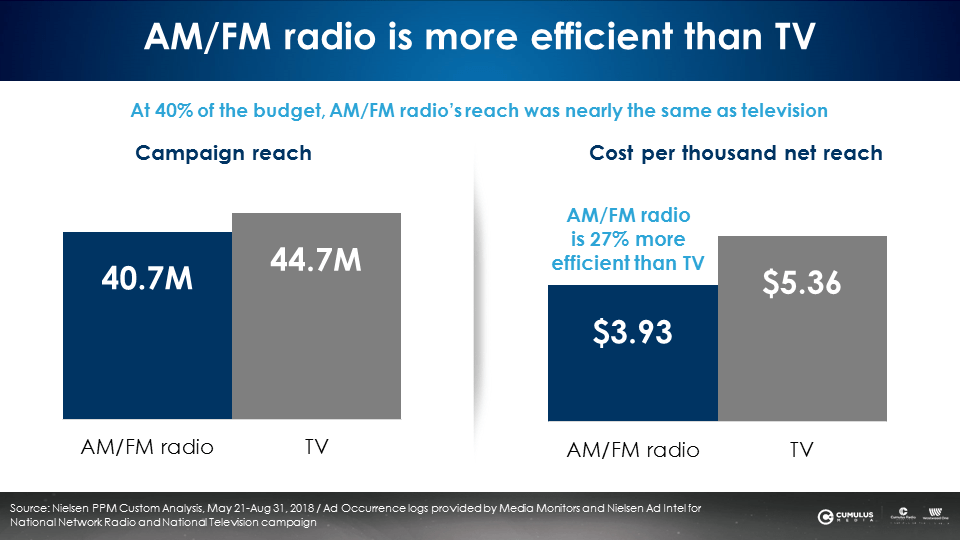
AM/FM radio boosted sales effects across the board. Compared to those unexposed to the AM/FM radio campaign, exposure to the AM/FM radio ads generated significant positive sales impact:
- Spend per transaction was up +3.2%
- Transactions per buyer grew +7.9%
- Total spend overall increased +8.5%
- Share of category was boosted +9%
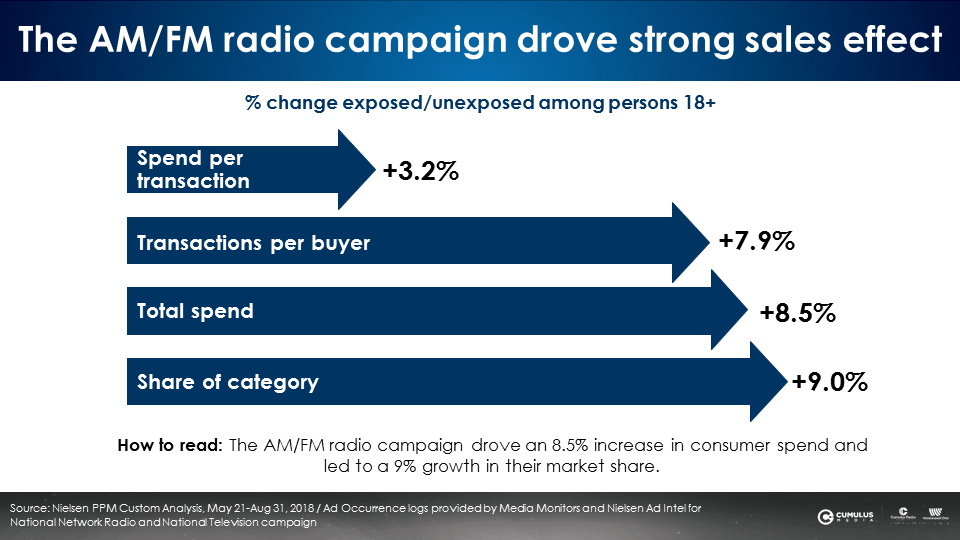
AM/FM radio generated $11.50 return on advertising spend. Exposure to the AM/FM radio campaign generated significant ROI. For every $1 spent on AM/FM radio, the gasoline retailer saw $11.50 in incremental sales.
This positive sales outcome compares favorably to the numerous Nielsen sales lift studies that show the powerful sales impact of AM/FM radio campaigns. From breakfast bars to department stores to home improvement retailers, AM/FM radio generates impressive return on ad spend.
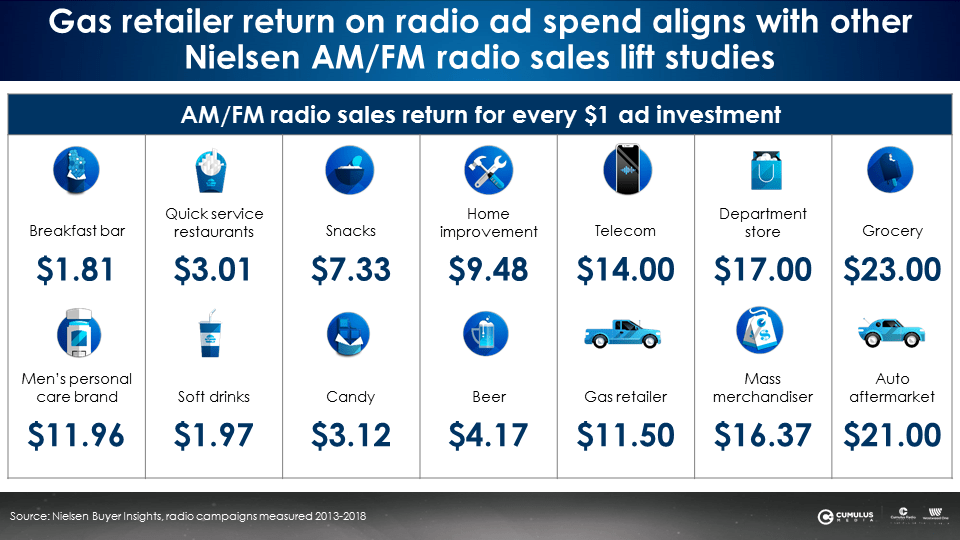
Adding AM/FM radio to the TV plan generates impressive growth in reach and sales.
Key takeaways:
- AM/FM radio makes your TV better: Most AM/FM radio reach generated was incremental to television
- AM/FM radio’s incremental reach lift was especially powerful among younger demos
- AM/FM radio was 27% more efficient than TV
- AM/FM radio boosted sales effects across the board
- AM/FM radio generated $11.50 return on advertising spend: $11.50 of additional sales were generated for every dollar of AM/FM radio advertising
Lauren Vetrano is Director of Content Marketing at CUMULUS MEDIA | Westwood One.
Contact the Insights team at CorpMarketing@westwoodone.com.